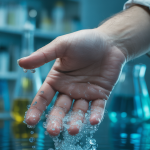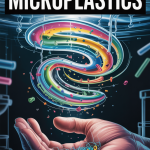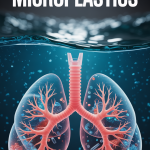You’re Eating Plastic—and It’s Worse Than You Think | The Dangers of Microplastics
Imagine sitting down to dinner and enjoying a delicious spoonful of… plastic.
Ridiculous, right? But here’s the shocking truth new research shows the average person now ingests up to a credit card’s worth of plastic every single week. From the food you eat, the water you drink, the air you breathe, and even the dust in your home.
These microscopic invaders are called microplastics, and they’re not just polluting our planet – they’re inside your body right now, potentially disrupting your hormones, aging your cells, and even affecting your brain.
Let’s start with what we’re dealing with. Microplastics are tiny plastic particles less than 5 millimeters wide – that’s smaller than a grain of rice. Nanoplastics are even tinier – so small they can actually enter your individual cells.
These particles are now found everywhere on Earth – in our oceans, our soil, our food supply. But more alarmingly, they’ve been detected inside the human body.
Scientists have found microplastics in human blood, lungs, liver, kidneys, the placenta of pregnant women, and most recently – even in brain tissue.
And here’s what’s truly concerning we’re only beginning to understand the full scope of health effects. What researchers are uncovering is deeply troubling – from hormone disruption to inflammation, accelerated aging, and even cognitive decline.
But here’s the good news you have far more control than you might think. Today, I’m going to show you exactly where these plastic particles are hiding in your daily life, how they’re affecting your health, and most importantly – the simple, effective steps you can take to protect yourself and your family.
HIDDEN SOURCES – FOOD & DRINK
Let’s start with the most obvious culprit – but also some surprising sources you probably never considered.
Plastic water bottles are one of the worst offenders. A single liter can contain hundreds of thousands of microplastic particles. But even if you avoid bottled water completely, you’re still not safe.
Take seafood, for example. Shellfish like shrimp and oysters – foods we eat for their health benefits – act like tiny plastic vacuum cleaners in polluted waters. When you eat them, you’re also eating the plastic they’ve absorbed.
Even basic ingredients like salt and sugar aren’t immune. Ocean-harvested salt contains plastic particles from polluted seawater, while refined sugar often contacts plastic during processing and packaging.
Here’s one that might shock you those premium pyramid tea bags or silky-looking tea sachets? Many are actually made of plastic. When steeped in hot water, they can release billions of particles into your cup. Even some organic teas use these plastic bags.
And virtually any food wrapped or stored in plastic – even organic food – is vulnerable to contamination, especially when heated. This includes everything from pre-packaged salads to frozen meals.
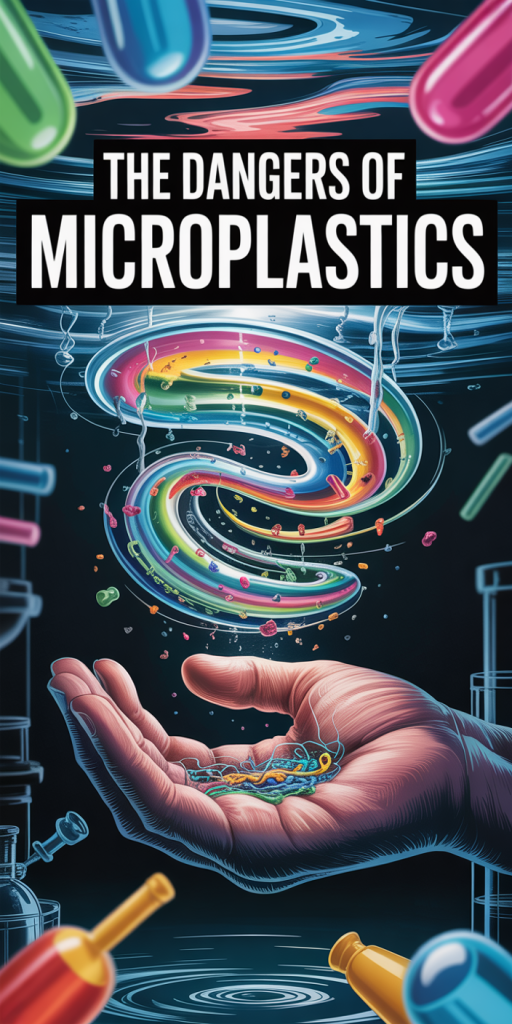
HIDDEN SOURCES – HOUSEHOLD ITEMS
Now let’s talk about your tap water. Many people think a basic water filter is enough protection, but the truth is most common filters aren’t equipped to remove microplastics.
Studies show tap water in many cities contains plastic particles from old pipes and environmental runoff. But here’s the kicker – bottled water actually contains twice as many microplastics as tap water on average.
Your kitchen could be a major source of daily exposure. Non-stick cookware like Teflon can release millions of micro and nanoplastic particles when scratched or overheated. New research shows that even brand-new non-stick pans leak toxic particles into every meal.
What you wear matters too. Synthetic fabrics like polyester, spandex, and nylon shed microfibers every time they’re washed. One load of laundry can release hundreds of thousands of plastic fibers into the water system.
Even your beauty routine could be exposing you. Many lipsticks, foundations, moisturizers, and anti-aging creams contain plastic particles for texture and spreadability. These can enter your body through your skin or mouth.
And here’s something most people never consider thermal paper receipts are coated with BPA or BPS, which absorb directly through your skin. When you handle receipts and then touch your mouth or food, you create a direct exposure route.
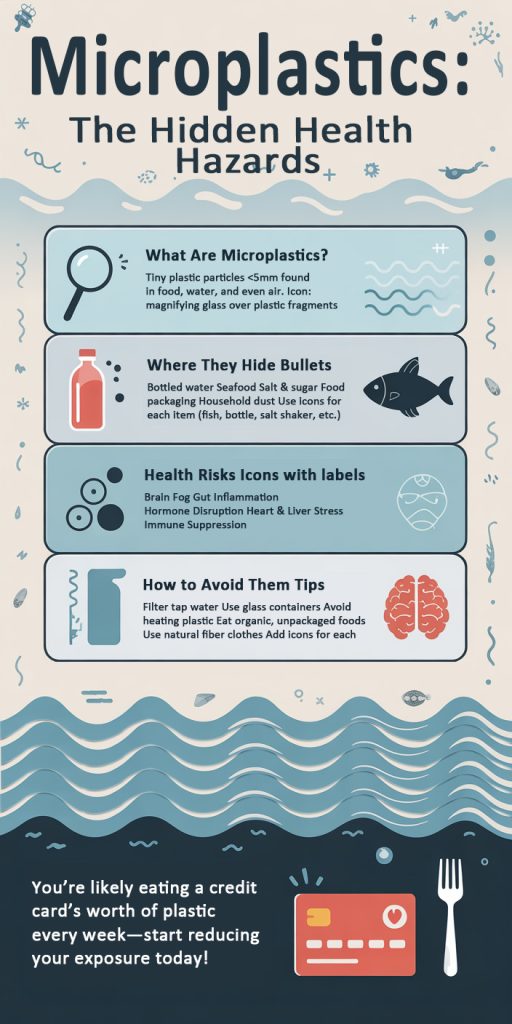
HEALTH IMPACTS
Now let’s talk about why this matters for your health. These aren’t just passive particles floating harmlessly through your body. Once inside, microplastics can travel through your bloodstream, embed in your organs, cross the blood-brain barrier, and alter how your cells function.
One of the most alarming discoveries is that microplastics have been found in human brain tissue. Recent research found that people with dementia had three to five times higher concentrations of microplastics in their brains compared to those without cognitive impairment.
These particles trigger chronic inflammation throughout your body. Your immune system detects them as foreign invaders and mounts a response that never turns off. Over time, this leads to free radical damage, accelerated aging, and contributes to nearly every chronic disease – heart disease, cancer, diabetes, and autoimmune issues.
Microplastics also disrupt your hormones, especially estrogen and thyroid hormones. This is particularly concerning for women over 40, who may experience worsened hot flashes, irregular cycles, weight gain, fatigue, and mood swings.
Your gut health takes a hit too. Microplastics alter your gut microbiome, reducing beneficial bacteria, damaging your intestinal lining, and triggering inflammation that can lead to leaky gut syndrome.
The bottom line? These particles are accelerating aging, disrupting hormones, damaging cells, and quietly raising your risk of the most feared chronic diseases. But here’s the empowering truth – you’re not powerless against them.
SOLUTIONS – WATER & KITCHEN
Let’s talk solutions. First, upgrade your water. Invest in a high-quality filter that specifically removes microplastics – look for reverse osmosis, ultrafiltration, or nanofiltration systems. Ditch plastic water bottles completely and drink from glass, stainless steel, or copper containers.
Transform your kitchen by replacing scratched or aging non-stick cookware. Choose cast iron, ceramic-coated, or stainless steel options instead. Store leftovers in glass containers and never heat food in plastic, especially in the microwave.
When shopping, choose fresh, unpackaged produce whenever possible. Bring your own reusable produce bags and store bulk goods in glass jars instead of plastic containers.
Revamp your beauty routine by reading ingredient labels carefully. Avoid products containing polyethylene, acrylates, nylon, or carbomers. Choose USDA Certified Organic skincare whenever possible – this seal ensures no synthetic polymers or hidden toxins.

SOLUTIONS – LIFESTYLE & DETOX
Choose natural fabrics like organic cotton, linen, bamboo, and wool over synthetic materials. When you do wash synthetic clothes, use a microfiber filter or laundry ball to catch plastic fibers, and line-dry when possible to reduce airborne particles.
Be mindful of small daily habits. Politely decline thermal paper receipts when possible, and always wash your hands after handling receipts or plastic packaging.
Support your body’s natural detox pathways with fiber-rich foods like flaxseeds and chia seeds, which help bind and eliminate toxins. Load up on antioxidant-rich foods – berries, broccoli, green tea, and spices like turmeric and cinnamon – to combat free radical damage.
Stay hydrated with clean water, move your body daily to stimulate lymphatic flow, and sweat regularly through exercise or sauna use to help excrete toxins through your skin.
Here’s the truth while microplastics may seem to be everywhere, you are absolutely not powerless. With just a few smart changes, you can dramatically reduce your exposure and give your body the breathing room it needs to detox, repair, and thrive.
You don’t have to overhaul your entire life overnight. Start with just one area – maybe your water, your cookware, or your skincare routine. Each change you make is a powerful step toward protecting your health for years to come.
Remember, this isn’t about perfection – it’s about progress. Every plastic particle you avoid is one less toxin your body has to deal with. You have the power to protect yourself and your family. The question is which change will you make first?
Take action today. Your future self will thank you.




